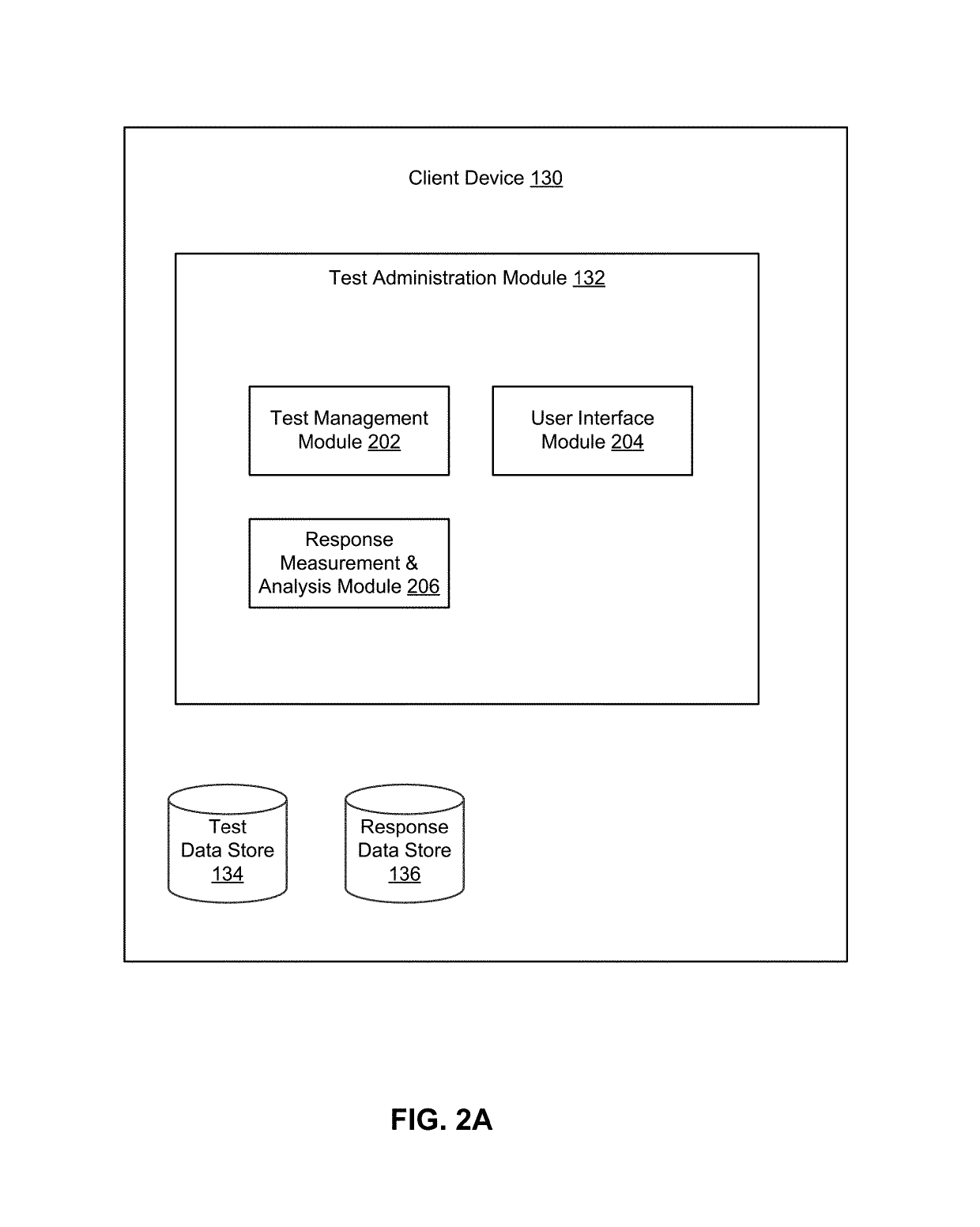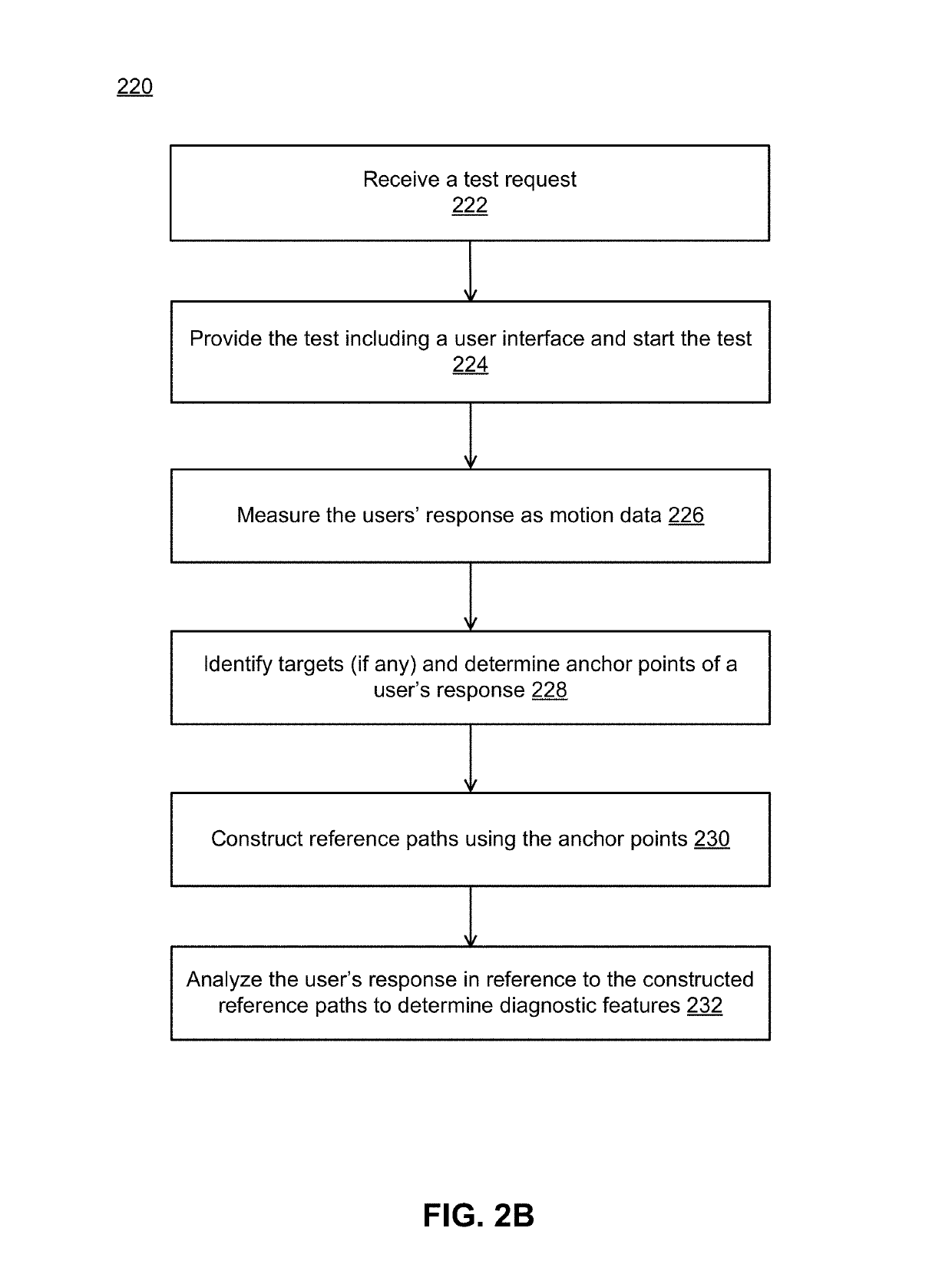Data collection and analysis for self-administered cognitive tests characterizing fine motor functions
a fine motor function and data collection technology, applied in the field of cognitive testing systems and methods, can solve the problems of inability to identify many features of the user's response, inability to observe the user's response in the traditional way, and unavoidable amount of subjectivity in scoring
- Summary
- Abstract
- Description
- Claims
- Application Information
AI Technical Summary
Benefits of technology
Problems solved by technology
Method used
Image
Examples
Embodiment Construction
[0017]The Figures (FIG.) and the following description relate to various embodiments by way of illustration only. It should be noted that from the following discussion, alternative embodiments of the structures and methods disclosed herein will be readily recognized as viable alternatives that may be employed without departing from the principles discussed herein. Reference will now be made in detail to several embodiments, examples of which are illustrated in the accompanying figures. It is noted that wherever practicable similar or like reference numbers may be used in the figures and may indicate similar or like functionality.
[0018]In various embodiments, computer-mediated, task based assessments of neurological disorders include tasks that require the user to draw lines and figures using computer device, coupled to a touch-sensitive surface, such as a touchscreen, for receiving the user's inputs. For example, a test prompts a user to draw lines to connect related words, symbols,...
PUM
 Login to View More
Login to View More Abstract
Description
Claims
Application Information
 Login to View More
Login to View More - R&D
- Intellectual Property
- Life Sciences
- Materials
- Tech Scout
- Unparalleled Data Quality
- Higher Quality Content
- 60% Fewer Hallucinations
Browse by: Latest US Patents, China's latest patents, Technical Efficacy Thesaurus, Application Domain, Technology Topic, Popular Technical Reports.
© 2025 PatSnap. All rights reserved.Legal|Privacy policy|Modern Slavery Act Transparency Statement|Sitemap|About US| Contact US: help@patsnap.com



